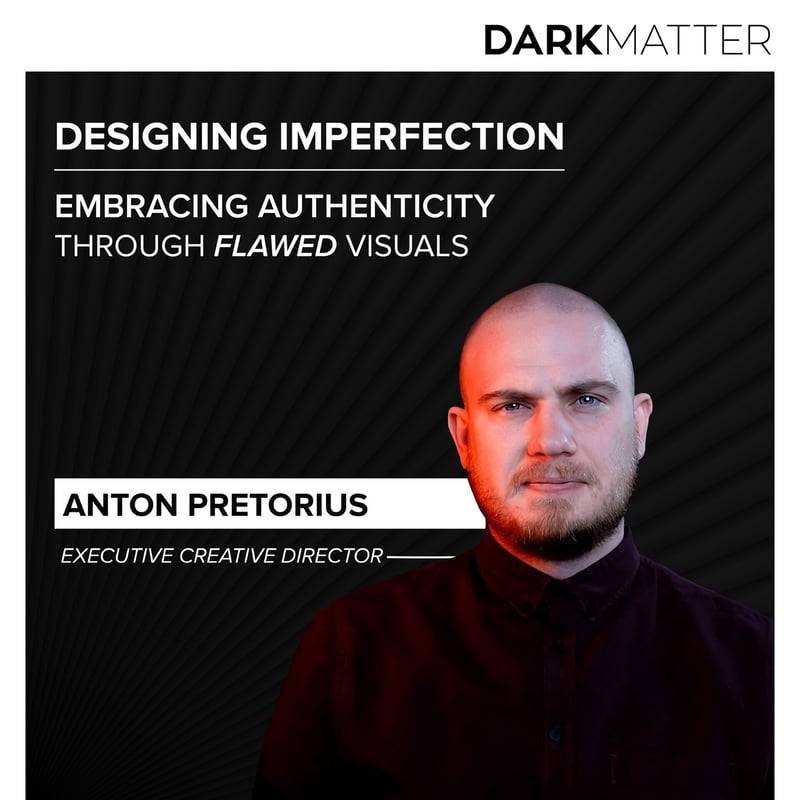Designing Imperfection - Embracing Authenticity Through Flawed Visuals
Written by: Anton Pretorius Save to Instapaper
At the height of 21st-century media, perfection was at the centre of everything we created and shared. Models were photoshopped to the near edge of flawlessness, removing all blemishes and signs of humanity. Lifestyles were depicted as utopian and aspirational, yet completely unattainable for regular people. While this created a barrier between brands and their consumers, it also alienated audiences by presenting ideals that were unobtainable.
Fast forward to 2024, and the pendulum has swung in the opposite direction. The newer generations, having grown up with the advent of the internet and a constant bombardment of media, have leaned heavily into the ‘real’ over the ‘fake’. Platforms like YouTube and TikTok have normalised user-generated content, creating a trend that values authenticity over polish. Audiences today care far less about what content looks like and far more about what it’s trying to say. This shift has drastically influenced modern creative direction and the art world as a whole.
Why Authenticity Matters in Creative Direction
Consumers are increasingly drawn to brands that feel relatable, genuine, and imperfect. Studies in psychology suggest that imperfections evoke a sense of warmth and approachability, humanising brands and making them appear more relatable. Flawed visuals communicate honesty and transparency, appealing to audiences who prioritise authenticity over the curated ideal.
However, imperfection doesn’t mean poor quality—it means embracing the human touch. As creative professionals, the challenge is to strike a balance: visuals must remain polished while reflecting the rawness of real life. Authenticity is difficult to fake; humans have evolved to detect insincerity. Therefore, intention becomes a critical tool in modern advertising.
Ways the Industry Creates Authentic Visuals
Hand-Drawn Elements
There has been a renewed push towards hand-drawn illustrations and mixed media to combat the overly polished feel of digital art. These elements bring a sense of authenticity and uniqueness that digital tools often fail to achieve. AI-generated art, while quick and inexpensive, undermines the pursuit of authenticity. AI art often lacks the soul and intentionality of human creation, making it the antithesis of authentic, trust-building visuals.
Asymmetry
Symmetry has long been a hallmark of polished visuals, symbolising control and order. However, nature is rarely symmetrical. Asymmetry, therefore, creates visuals that feel more organic and natural, reflecting the inherent chaos of real life. In creative direction, asymmetry reads as disorderly yet intentional, evoking a sense of authenticity.
It’s important to note that asymmetry still requires thoughtful composition. While it may look spontaneous, there is always an underlying structure guiding the visual flow. Too random, and it risks feeling haphazard or unplanned.
Natural Lighting and Realistic Imagery
Natural lighting and realistic photography play a critical role in conveying authenticity. However, challenges arise with the use of stock photography, which feels inherently inorganic. Stock images are generic and lack the specific messaging that purpose-driven photography achieves.
Similarly, the widespread use of photo filters on platforms like Instagram has made it easier to hide imperfections. To create authentic visuals, purpose-driven photography with intelligent editing is essential. The focus should be on subtle adjustments that enhance the image without erasing its human touch.
The Role of Imperfection in Modern Design
The shift towards imperfection in creative direction moves away from unattainable ideals and acknowledges the power of authenticity. Consumers today value honesty and relatability, which are effectively communicated through visuals that incorporate:
- Hand-drawn elements for a personalised touch.
- Asymmetry to reflect the organic, natural world.
- Natural lighting and realistic photography for true-to-life visuals.
Conclusion
Authentic design isn’t about neglecting quality but about creating thoughtful visuals that reflect real, lived experiences. By embracing imperfection, brands can project a human touch that feels genuine, fostering trust and bridging the gap between businesses and audiences. In a world saturated with overly curated content, authenticity stands out as a powerful differentiator. Balancing rawness and intentionality is the key to making brands more relatable and accessible in today’s digital age.
Total Words: 655
Social Media Post
Designing Imperfection - Embracing Authenticity Through Flawed Visuals
Authenticity resonates. Embrace imperfection to build trust, relatability, and real human connections. #AuthenticDesign #CreativeDirection #FlawedVisuals #RealConnections #mypressportal #pressrelease #AfricaNewsroom #bizcommunity #publicrelations #africa #southernafrica #southafrica
Get new press articles by email
Latest from
- Reliable Connections - The Secret to Thriving Small Businesses
- CHOC Childhood Cancer Foundation tag teams with Body20 for fundraising campaign
- A Framework for Creativity
- XLink Send - Affordable Cross-Border Payment Solutions for the African Continent
- XLink Communications Leads the Charge in Transforming Payment Solutions and Advancing Financial Inclusion Across Africa
- TEARS Foundation Launches Soothing the Nation Campaign
- Always-On Always Delivers - Keep Brands Humming Without the Big Headlines
- Master Simple, Efficient B2B Marketing Methods with DarkMatter’s Free Downloadable White Paper
- Anti-Marketing - The Antidote For A Dead Marketing Game
- B2Breakthrough - Leveraging influencers in less conventional marketing spaces
- Mastering Meme Marketing - Strategies for Brands
- Break the Scroll Cycle - Beat Content Fatigue and Maintain Engagement
- Creative Communications Agency Darkmatter Opens Public Relations Division
- Brands need to be cautious when it comes to tech trends. Look at what’s happening with NFTs
- Clockwork welcomes Sergio Santos-van Vuuren as Public Relations Director
The Pulse Latest Articles
- Education Is The Frontline Of Inequality, Business Must Show Up (December 11, 2025)
- When The Purple Profile Pictures Fade, The Real Work Begins (December 11, 2025)
- Dear Santa, Please Skip The Socks This Year (December 10, 2025)
- Brandtech+ Has 100 Global Creative Roles For South African Talent (December 9, 2025)
- The Woman Behind Bertie: Michelle’s Journey To Cape Town’s Beloved Mobile Café (December 9, 2025)
